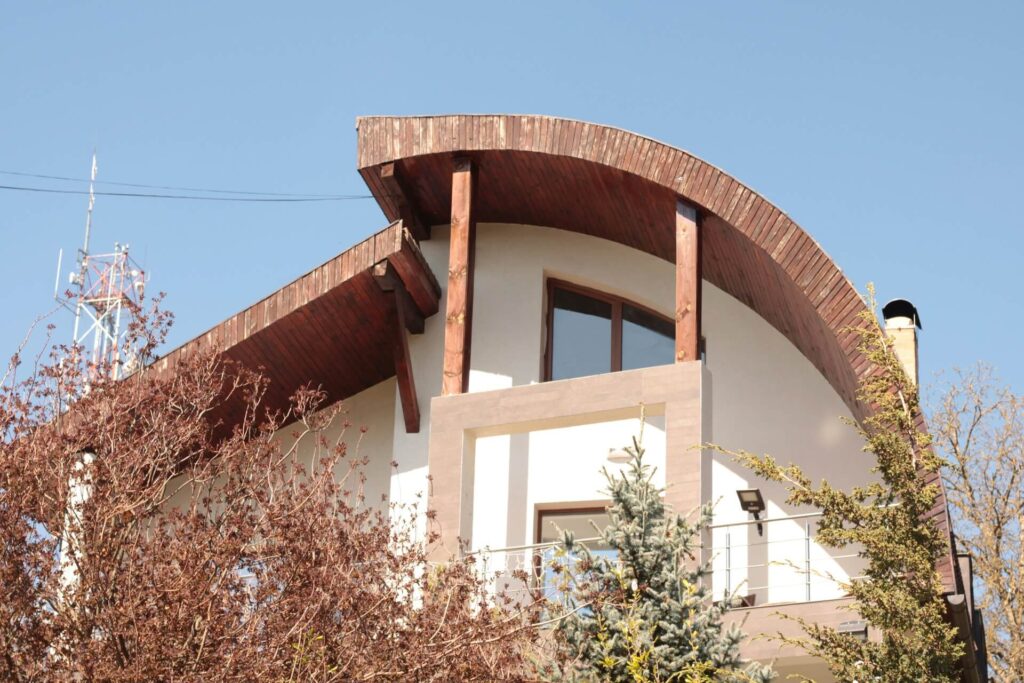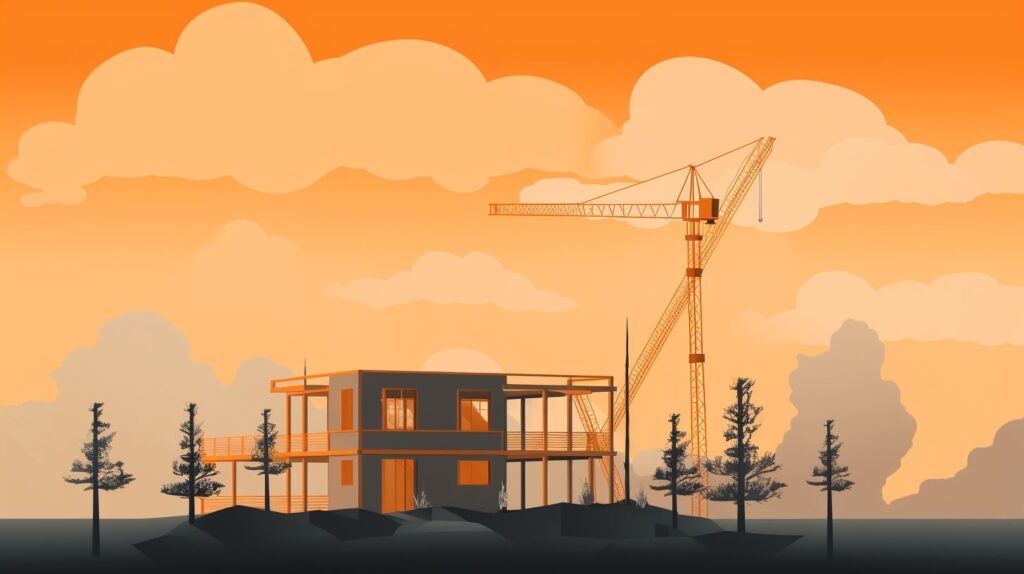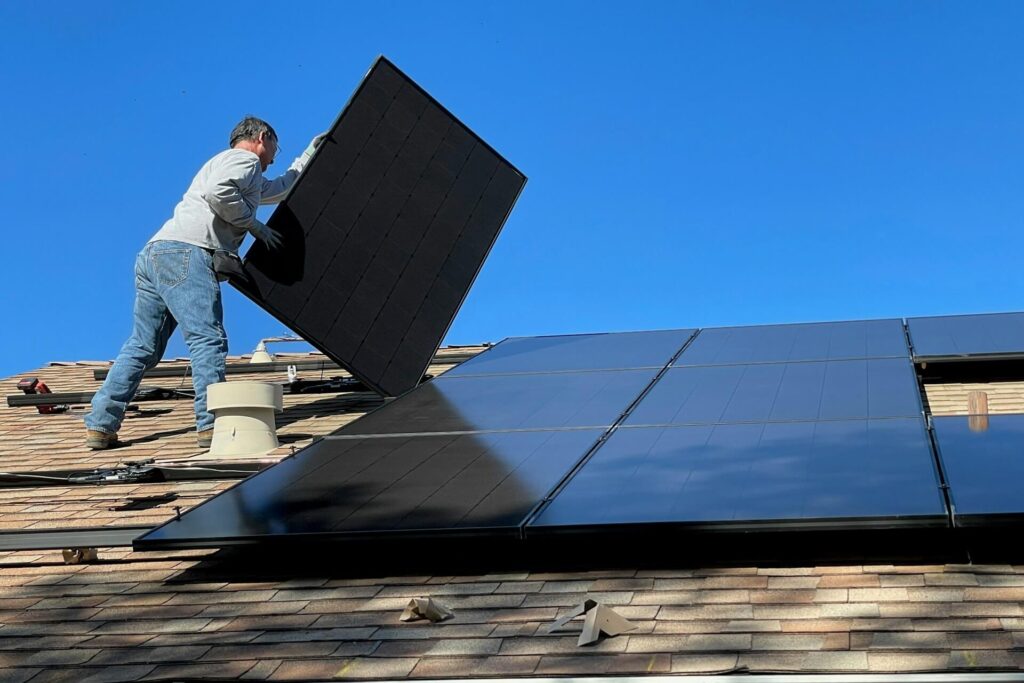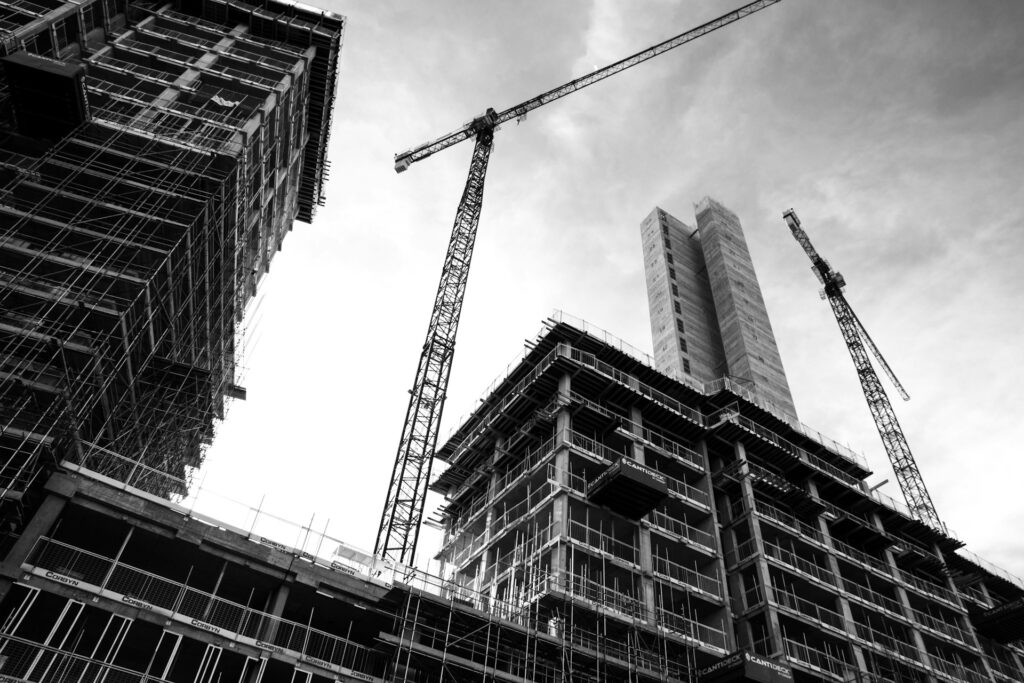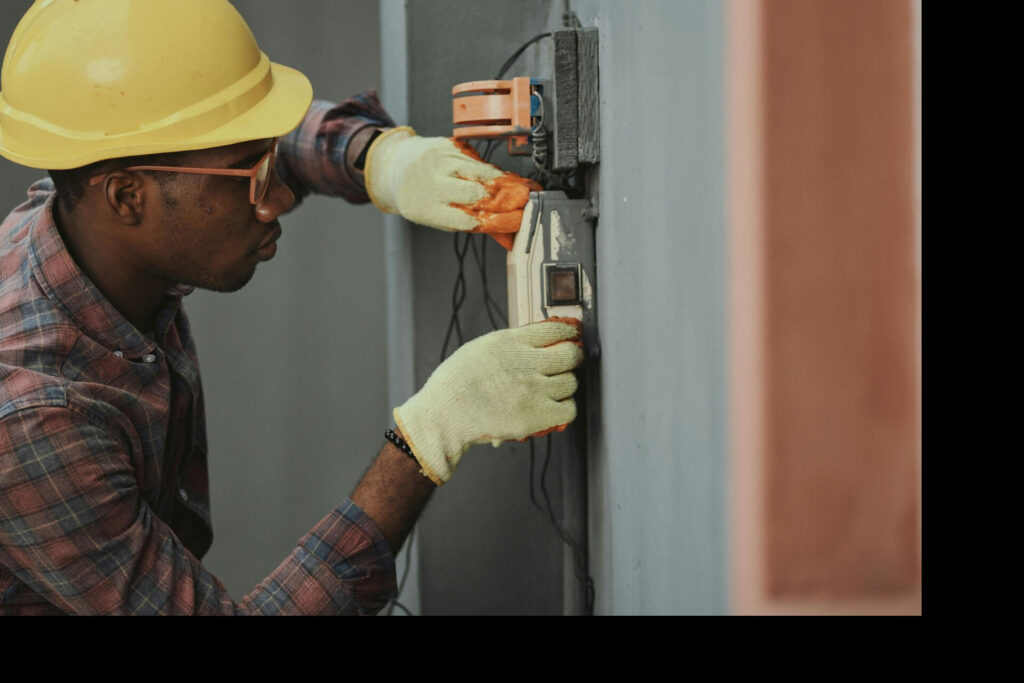We are reader-supported. When you buy through links on our site, we may earn an affiliate commission.
The sheer number of machines on a site might intimidate those just starting their careers in the construction industry. People who have trouble telling the difference between a bulldozer and a backhoe should check out this list of 30 types of heavy construction equipment.
We’ll guide you through everything from multi-terrain loaders to material handling equipment. Innovators designed each of these machines for the unique tasks construction projects require, including road construction, civil construction and everything else.
Types of construction equipment:
- Excavators
- Backhoes
- Bulldozers
- Compactors
- Pile drivers
- Loaders
- Trenchers
- Forklifts
- Telehandlers
- Tractor scrapers
- Asphalt pavers
- Drum rollers
- Boom lifts
- Scissor lifts
- Manlifts
- Skid-steer loaders
- Feller bunchers
- Articulated haulers
- Cold planers
- Off-highway trucks
- Motor graders
- Towable tower lights
- Carry deck cranes
- Draglines
- Rotary blsthole drills
- Electric rope shovels
- Utility vehicles
- Mixers
- Tower cranes
- Track loaders
1. Excavators
What Is an Excavator?
Excavators are essentially a massive bucket on an articulated arm, used to move large amounts of earth. The bucket connects to a cab and a base, sitting on either wheels or treads.
How Is an Excavator Used?
Excavators have nearly limitless applications on a construction site. The cab and arm can usually rotate 360 degrees, depending on what’s necessary.
2. Backhoes
What Is a Backhoe?
Backhoes appear on nearly every construction site because of their versatility. On one side, they have a hoe or excavator-like arm, while on the other, they have a loading bucket.
How Is a Backhoe Used?
Backhoes are useful for loading and unloading materials, digging holes, or moving earth, just to name a few applications.
<a name="bulldozers"></a>3. Bulldozers
What Is a Bulldozer?
Bulldozers are an enormous piece of equipment you’ll see on nearly every construction site. It comes with a bucket, plate, or blade on the front and uses treads instead of tires to move around the job site.
How Is a Bulldozer Used?
Workers primarily use bulldozers to push loose materials. They come in various sizes depending on their applications, but they tend to all look very similar.
<a name="compactors"></a>4. Compactors
What Is a Compactor?
Building on loose earth is a bad idea. That’s where compactors come in. These devices use pneumatics to repeatedly drive a heavy weight into the ground to compact the soil beneath, making it suitable for building.
How Is a Compactor Used?
Compactors are invaluable tools for any project on unsteady ground. The majority of the time, the soil beneath a planned project won’t be compact or stable enough to build on. Compactors turn loose sand and earth into a workable surface.
<a name="piledrivers"></a>5. Pile Drivers
What Is a Pile Driver?
When the blueprint calls for a pile foundation, which is another name for a series of columns the team places or constructs directly in the soil below the foundation, the only thing that can do that is a pile driver.
How Do Teams Use Pile Drivers?
They hold foundations in place and drive them directly into the ground. It takes some serious power to accomplish this task, so these machines are usually fairly large.
<a name="loaders"></a>6. Loaders
What Is a Loader?
Loaders, as their name suggests, load things like massive sections of timber or concrete that aren’t usually possible to move by hand.
How Is a Loader Used?
Loaders can come in all shapes and sizes, depending on the material they move. They all have one thing in common, though — they make it easier to manipulate heavy sections of building materials.
<a name="trenchers"></a>7. Trenchers
What Is a Trencher?
Whether the goal is to dig a ditch or bury a cable, sometimes backhoes and excavators are too big for the job. Innovators designed trenchers with a single goal in mind — to dig a trench.
How Is a Trencher Used?
Trenchers use small scoops or buckets, often on a chain, to remove soil in a limited area, often resembling oversized chainsaws. Things like width and depth vary with the trencher’s size, and they can often adjust to handle multiple applications.
<a name="forklifts"></a>8. Forklifts
What Is a Forklift?
Forklifts are compact pieces of equipment that use forks to lift loaded pallets or other items and transport them easily to their destination. Anyone who’s ever worked in a warehouse is familiar with forklifts.
How Is a Forklift Used?
These powered devices move palletized equipment or materials when they’re too heavy or awkward to transport with pallet jacks or by hand. On construction sites, they might have treads instead of tires, but that’s the only major difference.
<a name="telehandlers"></a>9. Telehandlers
What Is a Telehandler?
If a forklift can’t do the job, either because of the size of the load or uneven terrain, telehandlers step in. These are essentially backhoes with forklift forks on one side.
How Is a Telehandler Used?
Telehandlers work on unfinished terrain and can often lift much more than a typical forklift. Workers use them almost exclusively on outdoor projects due to their sheer size.
<a name="tractorscrapers"></a>10. Tractor Scrapers
What Is a Tractor Scraper?
Tractor scrapers have a sharp edge that the operator can drag across the surface, moving soil up and into a hopper so they can haul it away.
How Is a Tractor Scraper Used?
Teams primarily use tractor scrapers for earthmoving and leveling on job sites. They’re fairly unique, and other tools can accomplish many of their tasks, but they are also incredibly useful.
<a name="asphaltpavers"></a>11. Asphalt Pavers
What Is an Asphalt Paver?
Another piece of equipment people often overlook is the asphalt paver. These pavers hold heated asphalt and place it in an even layer on the ground as it passes.
How Is an Asphalt Paver Used?
Asphalt pavers are necessary on nearly every construction site, even if you’re not building roads. You’ll need them for creating parking lots and other paved spaces. They may follow a tanker truck that carries the various components necessary for asphalt creation and a drum roller will follow them.
<a name="drumrollers"></a>12. Drum Rollers
What Is a Drum Roller?
Drum rollers are just vehicles that use two massive drums for wheels instead of tires or treads.
How Is a Drum Roller Used?
They’re useful for flattening surfaces, compacting soil, and ensuring everything is smooth and flat in preparation for other steps in the project.
<a name="boomlifts"></a>13. Boom Lifts
What Is a Boom Lift?
When ladders or scaffolding aren’t an option to get workers off the ground, boom lifts step in. These freestanding pieces of equipment use a hydraulic arm to lift a bucket capable of hauling one or two people many feet off the ground.
How Is a Boom Lift Used?
Boom lifts are large and ideal for outdoor applications as long as there are no aerial obstacles, such as power lines, to worry about. They’re only good for small teams or individuals since they cannot lift more than two people.
<a name="scissorlifts"></a>14. Scissor Lifts
What Is a Scissor Lift?
If you need to get off the ground but don’t have the room for a large boom lift — or you’re working indoors — a scissor lift can fill the gap. These lifts use a system of hydraulic jacks to lift a platform that can carry one to two workers.
How Is a Scissor Lift Used?
Scissor lifts are ideal for working indoors or in confined spaces or in areas where you need things to be a bit quieter. Opt for an electric scissor lift for indoor work or a gas-powered one for extra lifting power.
<a name="manlifts"></a>15. Manlifts
What Is a Manlift?
For unfinished structures, taking an elevator to the upper floors isn’t an option. Manlifts are small lifts that elevate a single person to the next floor of a building still under construction.
How Is a Manlift Used?
Manlifts are usually small lifts with four wheels, making them easy to move wherever they’re necessary. Once in place, a hydraulic lift raises the single-person bucket.
<a name="skidsteers"></a>16. Skid-Steer Loaders
What Is a Skid-Steer Loader?
Not everything on a construction site needs to be massive. Skid-steers are small, single-person machines that can utilize a number of different types of attachments, depending on the necessary application.
How Is a Skid-Steer Loader Used?
Attach a bucket to the front and use it as a loader or excavator. Attach forks and it becomes a forklift or small telehandler. There are all sorts of different applications for these little pieces of construction equipment.
<a name="fellerbunchers"></a>17. Feller Bunchers
What Is a Feller Buncher?
The last thing anyone wants to do is waste good lumber if it happens to be growing on your job site. A feller buncher is for managing the logs once workers cut them down.
How Can Sites Use Feller Bunchers?
Feller bunchers use metal arms to hold trees in place before cutting them down with an attached chainsaw. Then it can use those same arms to manipulate the trees into a pile where they’ll later break down into usable parts.
<a name="articulatedhaulers"></a>18. Articulated Hauler
What Is an Articulated Hauler?
Dump trucks are valuable tools, but they’re often difficult to navigate in tight spaces. That’s where articulated haulers come in. These dump truck-style vehicles have a pivot point built into their frame, allowing them to navigate tight corners and small spaces with ease.
How Is an Articulated Hauler Used?
You’ll see articulated haulers used anywhere you might find dump trucks, or in spaces when hauling loads is necessary but more standard dump trucks won’t fit.
<a name="coldplaners"></a>19. Cold Planer
What Is a Cold Planer?
Asphalt goes down hot, but once it cools, it’s difficult to remove. Specialized road construction equipment is necessary to manage this tricky process. Cold planers use mobile grinders to pick up old asphalt and shoot it into a dump truck. From there, it can recycle into new asphalt.
How Is a Cold Planer Used?
Cold planers are very unique, and teams almost exclusively use them for removing existing asphalt. If repaving is part of your plan, you’ll need one of these to do the job.
<a name="offhighwaytrucks"></a>20. Off-Highway Truck
What Is an Off-Highway Truck?
Dump trucks and articulated haulers are great, but sometimes you need something a little bit bigger. Off-highway trucks are massive vehicles for unfinished environments and working off-road. Expect to climb a ladder to reach the steering wheel.
How Is an Off-Highway Truck Used?
Off-highway trucks primarily haul rocks or other heavy materials from one job site to another. They don’t need highways, and with their massive tires, often function better off-road than they would on a paved surface.
<a name="motorgraders"></a>21. Motor Grader
What Is a Motor Grader?
You can’t build a road or parking lot on unlevel ground. You can grade manually, but for areas where precision is essential, a motor grader is the perfect tool for the job.
How Is a Motor Grader Used?
Motor graders come equipped with a metal plate that ensures the area they’re grading will be perfectly flat and level.
<a name="towabletowerlights"></a>22. Towable Tower Light
What Is a Towable Tower Light?
Tight deadlines and daytime traffic often mean the best time to finish a task is after the sun sets. Towable tower lights usually run on diesel engines, meaning you can park them anywhere you need a bit of extra light in your workspace.
How Is a Towable Tower Light Used?
Using a towable tower light is simple. Park it where you need it, fill up the tank, and turn it on.
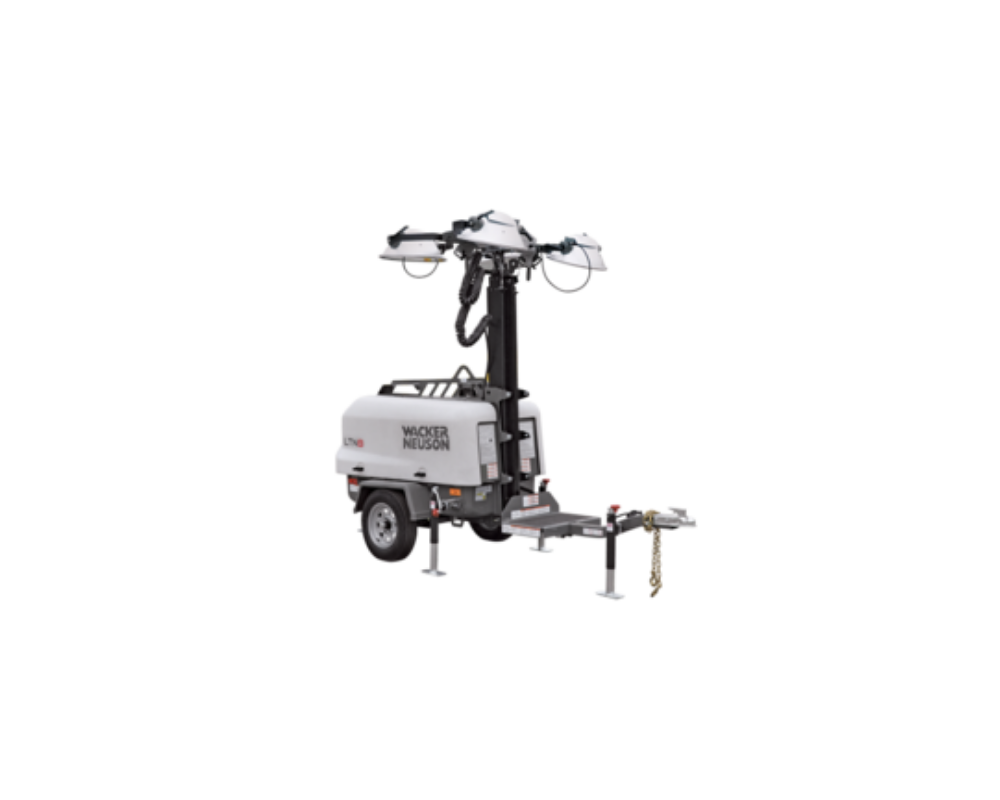
<a name="carrydeckcranes"></a>23. Carry Deck Crane
What Is a Carry Deck Crane?
Cranes are useful, but you don’t always have the space for a massive crane. That’s where a carry deck crane comes in. These mobile cranes have a rotating platform that can spin 360 degrees and sit on wheels so it’s easy to move from site to site.
How Is a Carry Deck Crane Used?
Carry deck cranes aren’t as strong as some of their larger cousins, but they can be a valuable tool for moving materials or components on nearly any job site.
<a name="draglines"></a>24. Draglines
What Is a Dragline?
For large-scale excavations, a backhoe or excavator might not be enough. Draglines are essentially a massive boom arm with a bucket on ropes or chains. The bucket can drag along the ground, collecting earth and debris as it moves, then easily pick up and dump the waste elsewhere.
How Is a Dragline Used?
Draglines come in all sorts of different sizes, with some so large that teams must assemble them on-site. For large excavations, this is a valuable tool.
<a name="rotaryblastholedrills"></a>25. Rotary Blasthole Drill
What Is a Rotary Blasthole Drill?
We’re not talking about hand drills that you might have hanging on your belt. Rotary blasthole drills are the sort of equipment you’d need to drill mine shafts.
How Is a Rotary Blasthole Drill Used?
You might not find this type of drill at your average construction site, but if you do encounter it, chances are good it’s autonomous and equipped with everything from built-in cameras to depth tracking to handle many of the tasks itself.
<a name="electricropeshovels"></a>26. Electric Rope Shovels
What Is an Electric Rope Shovel?
Electric rope shovels are another construction tool that gets the majority of their use on mining sites. You may find applications in construction, too. They’re perfect for relocating rock, earth, and other debris. And because they’re electric rather than gas-powered, they’re more eco-friendly.
How Is an Electric Rope Shovel Used?
Electric rope shovels are a smaller version of the massive draglines we’ve already mentioned. They can take the place of excavators, but are primarily for mining and other large-scale excavations.
<a name="utilityvehicles"></a>27. Utility Vehicles
What Is a Utility Vehicle?
Navigating from one end of your construction site to the other doesn’t have to take all afternoon. You’ll see utility vehicles of all shapes and sizes on your average work site, all with one thing in common — they help improve transportation and workplace efficiency.
How Is a Utility Vehicle Used?
Utility vehicles can run on gas or electricity and will usually have between four and six wheels. The exact details will vary depending on what you need on your construction site.
<a name="mixers"></a>28. Mixer
What Is a Mixer?
For large batches of concrete, a mixing blade on the end of a hand drill won’t cut it. That’s where mixers come in. These enormous drums come in various sizes, but they provide the means to mix large batches of concrete necessary for larger-scale construction projects.
What Do Mixers Do?
Mixers are large, oval-like tools that can fill with the cement, aggregate and water necessary to form concrete.
<a name="towercranes"></a>29. Tower Crane
What Is a Tower Crane?
Sometimes, mobile cranes just aren’t big enough to do the job. Tower cranes fill in that gap. They’re not mobile, and must mount to a concrete slab to maintain stability. But they can be hundreds of feet high, depending on the needs of the job site.
How Is a Tower Crane Used?
Tower cranes use balance to offset the weight of their loads. The top of the crane looks like a T and the operator sits in a cabin that rests at the intersection of that T.
<a name="trackloaders"></a>30. Track Loaders
What Is a Track Loader?
Most of the equipment so far has heavy-duty off-road tires, but that isn’t always sufficient. Track loaders are nearly identical to other loaders previously mentioned with one major difference — they have tracks or tank-style treads instead of wheels.
How Is a Track Loader Used?
Track loaders are useful anywhere tires won’t work. They can handle all sorts of uneven and unfinished terrain, but you cannot use them on paved surfaces without destroying both the pavement and the treads.
Just a Small Sample of the Different Types of Construction Equipment
This is just a small sample of the different types of heavy construction equipment the average individual can encounter on a construction site. Most of these have subcategories and divide themselves even further to create specialty items that may only work for a single specific application.
Regardless, heavy equipment is an integral part of the construction industry, and anyone who’s interested in starting a career in construction needs to understand all these different tools.

